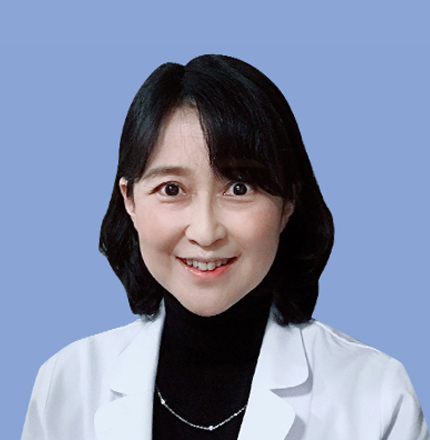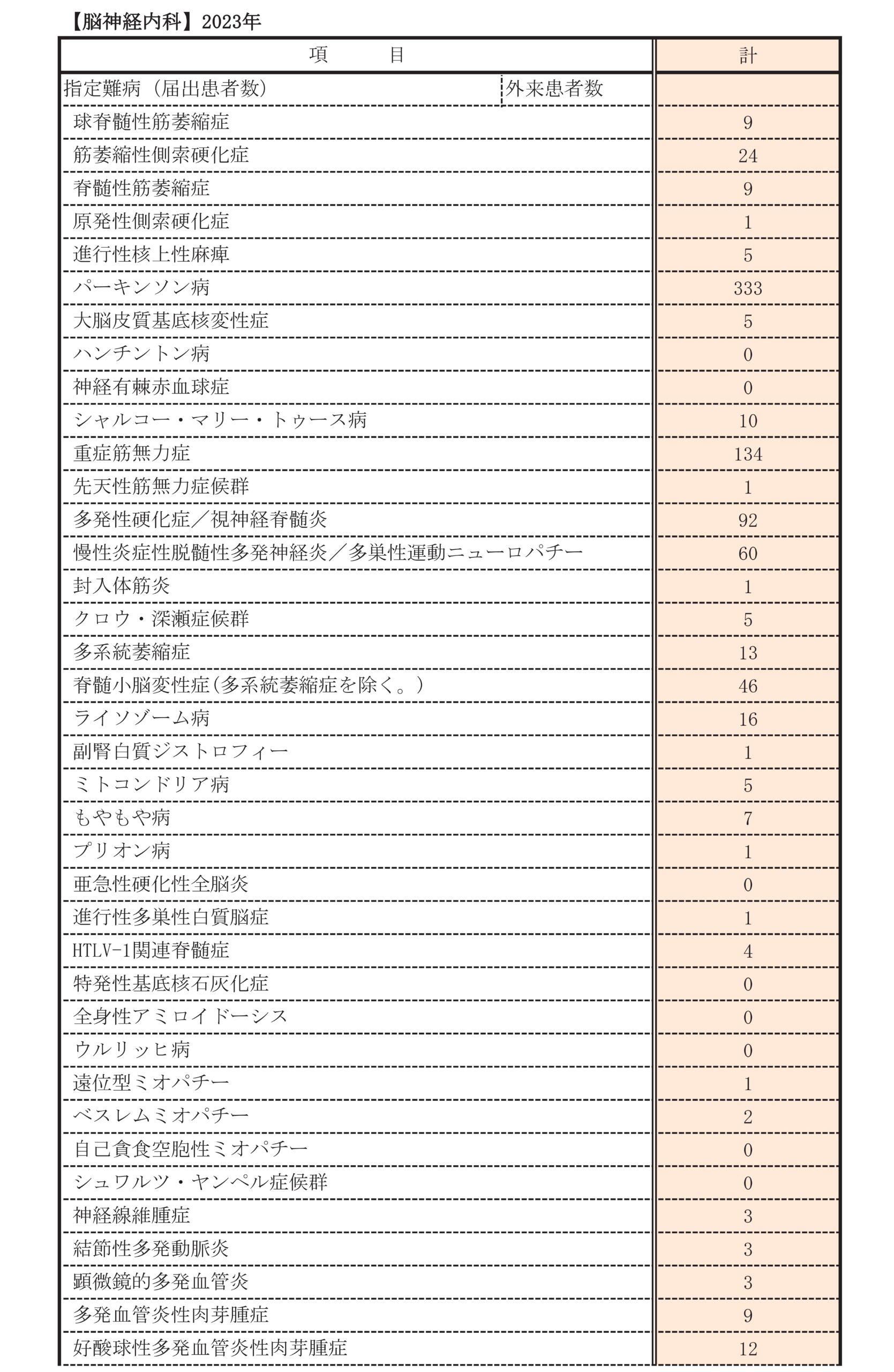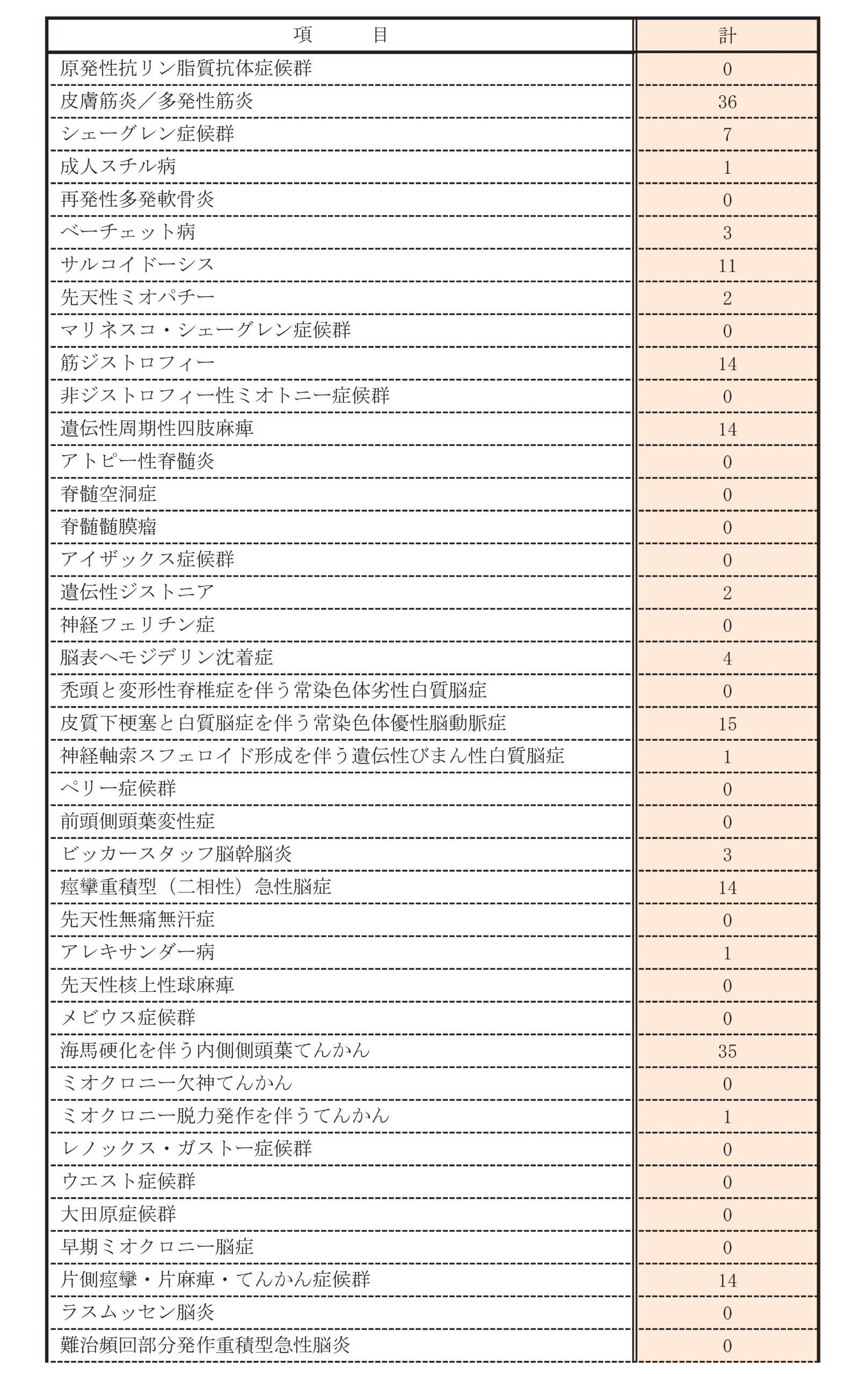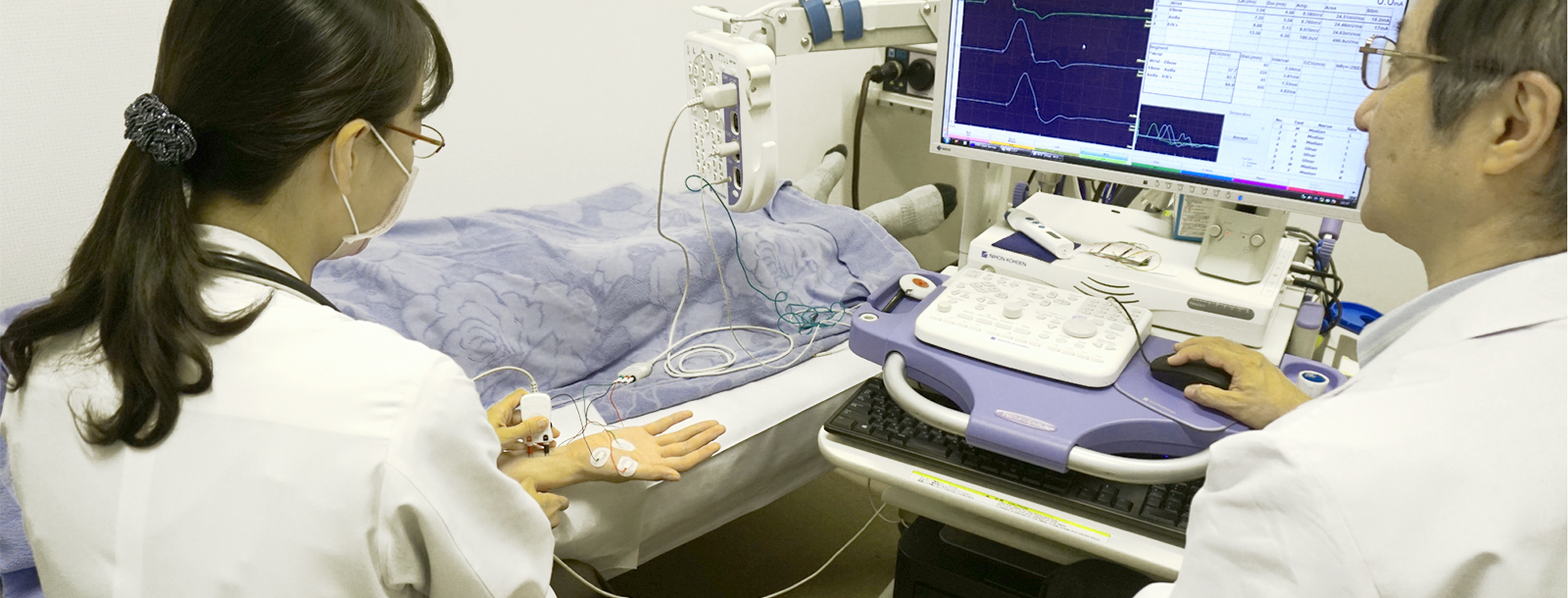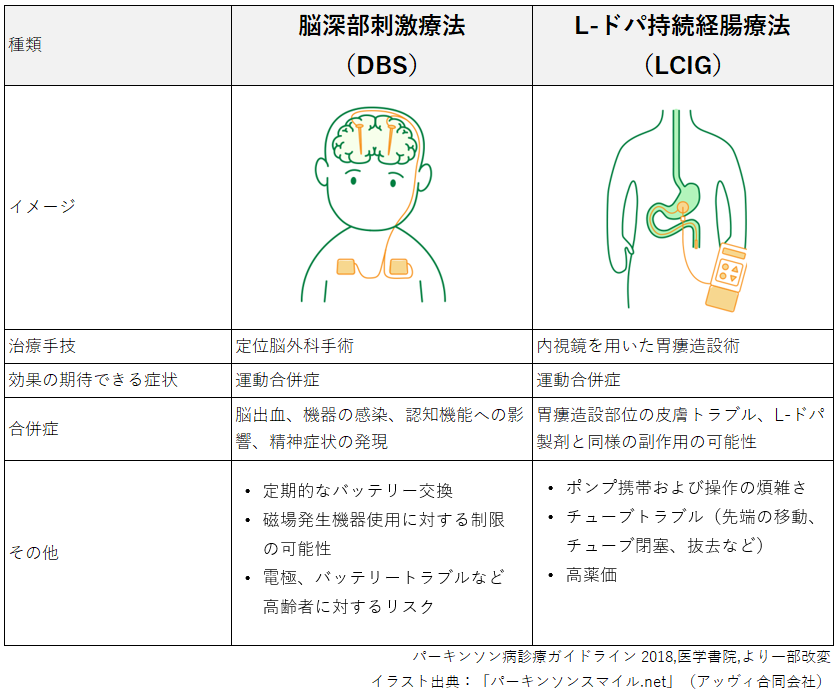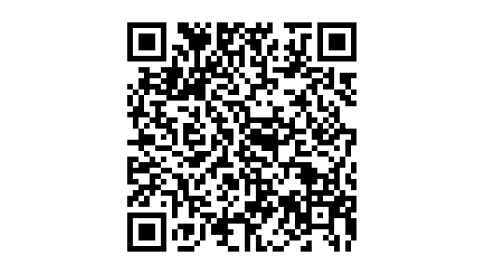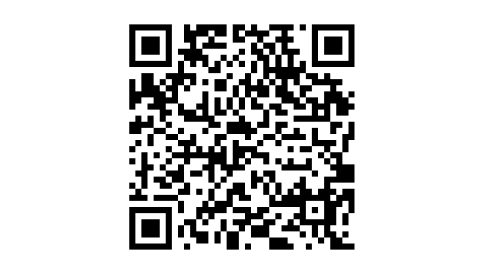I think that the name of Neurology has become more popular than before, but there are still many people who are confused with psychiatry and psychosomatic medicine. Neurology sees a wide variety of diseases, more than you might think, "Then what kind of diseases does Neurology see?" For example, starting with symptoms such as numbness in the limbs, headache, and muscle weakness, dizziness when walking, trouble speaking, trembling hands, difficulty in coming up with words, forgetfulness, drooping eyelids, unfocused eyes, etc. Symptoms such as dizziness, muscle stiffness, and frequent cramps are often neurological disorders. Psychiatry is in charge of mental illnesses such as depression and autonomic imbalance.
Diseases that cause paralysis and impaired consciousness, such as stroke, convulsion, meningitis and encephalitis, are neurological diseases that require emergency hospitalization. It may come as a surprise, but Neurology is also one of the departments with the highest number of emergency admissions in the hospital. In addition, many patients with so-called intractable neurological diseases, such as Parkinson's disease, cerebellar degeneration, amyotrophic lateral sclerosis, and myasthenia, visit our outpatient clinic. We also play an important role in supporting patients with these Regional Medical Cooperation Center diseases, with a focus on medical care.
In this way, Neurology doctor cover a wide range of areas, from emergency response to care for chronic diseases. The tenacity to organize is required. Although each doctor has his or her own individuality, we work together as a medical department as a whole to cover everything from acute to chronic diseases.
The thrombolytic therapy and endovascular treatment for the acute phase of cerebral infarction, which we have been working on together with Neurosurgery and the emergency department, are on track, and we have become one of the leading stroke centers in Japan. In addition, we have been actively working on the treatment of neurological symptoms related to blood diseases by transplantation, and the treatment of complex neurological disorders caused by immune disorders. Treatment using iPS cells for Parkinson's disease, which has been a hot topic recently, has also come into view. Our goal is to continue to be a Neurology that can provide correct medical care for patients at a higher level than anywhere else in these new fields.
If you have even the slightest problem with neurological symptoms, please consult a Neurology. In that case, please be sure to write a referral letter to your primary care doctor and make an appointment at the Regional Medical Cooperation Center before seeing a doctor. In addition, at our hospital, the direction of treatment has been decided to some extent, and stable patients are being examined by local doctors, so we ask for your cooperation in this regard.
Accurate diagnosis and treatment by doctor, cooperation with rehabilitation staff to improve symptoms.
From acute diseases to chronic diseases, our staff works together to provide medical care while giving top priority to accurate diagnosis and appropriate treatment while considering the patient's living background. We discuss diagnosis and treatment at a conference every morning, and provide medical care in cooperation with other departments as appropriate.
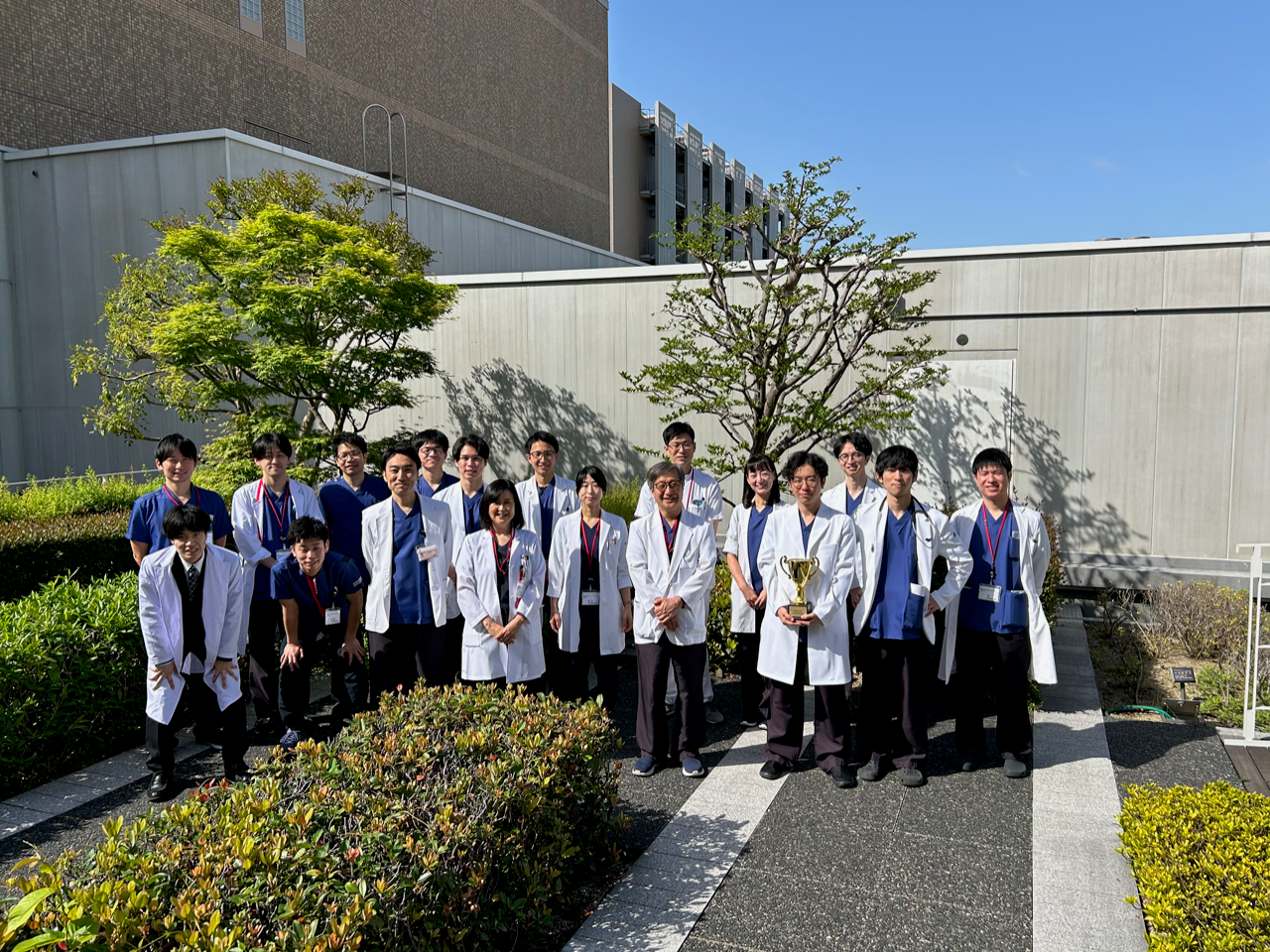
It is no exaggeration to say that continuous rehabilitation determines the patient's standard of living after administering medication and surgery. We work closely with a large number of rehabilitation staff to reduce and recover the aftereffects of our patients. Weekly conferences are held between Neurology staff and rehabilitation staff to provide medical care in cooperation.
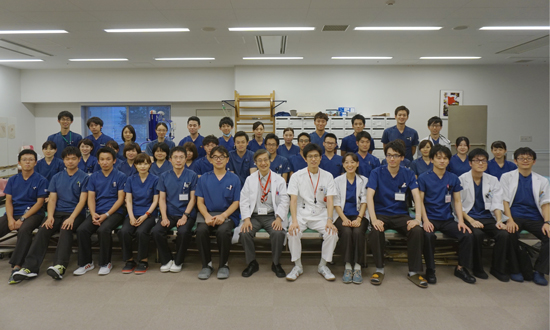
Medical record
Main diseases/treatments
Stroke (cerebral infarction, cerebral hemorrhage, carotid artery stenosis)
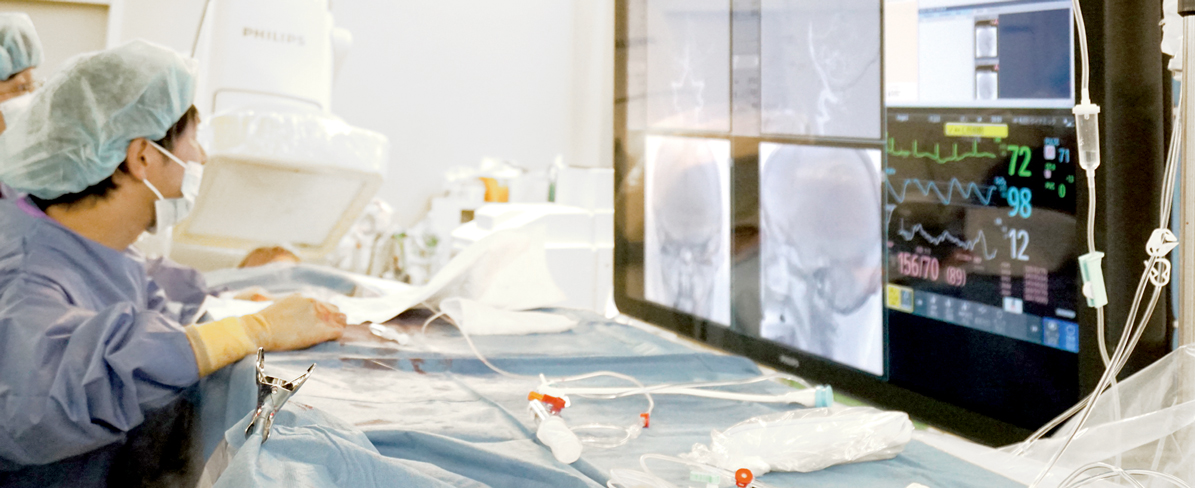
Cerebral infarction occurs when a blood clot (thrombus) clogs a blood vessel in the brain, and cerebral hemorrhage occurs when a blood vessel ruptures. By imaging the head CT, it is possible to distinguish between the two easily. Cerebral infarction can be caused by arteriosclerosis, narrowing of the blood vessels to the brain, or clogging of the blood vessels in the brain by blood clots from the heart (cerebral embolism). In some cases, the carotid artery narrows, causing a blood clot to form and cause a stroke. As a general stroke center, our hospital works closely with neurosurgeons to build a system that can accept patients 24 hours a day, 365 days a year, and aims to provide world-class medical care.
cerebral infarction
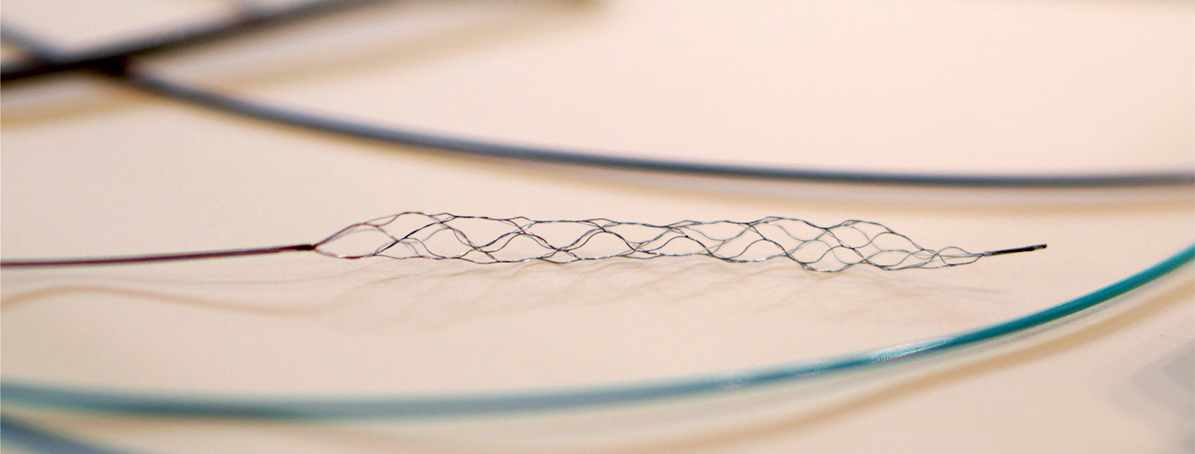
cerebral hemorrhage
High blood pressure is the most common cause. After hospitalization, blood pressure is lowered to prevent exacerbation of bleeding. If the amount of bleeding is large and serious, surgical removal of the hematoma may be performed, but in most cases conservative treatment is performed. In the case of atypical cerebral hemorrhage, cerebral vascular malformation may be the cause, so various tests (cranial MRI, angiography, etc.) are actively performed for diagnosis.
carotid artery stenosis
Diagnosis is made by carotid artery ultrasonography, contrast-enhanced CT, MRI, and angiography using a catheter. First of all, medical treatment is important, but if it is resistant to medical treatment or if the stenosis is severe, surgical treatment is necessary. There are “carotid endarterectomy” and “carotid artery stent placement”, but our department actively performs “carotid artery stent placement”, which is an endovascular treatment using a catheter, and uses a stent. to dilate the narrow part of the blood vessel. Before surgery, a cerebral blood flow SPECT test is performed to evaluate the cerebral blood flow, and the risk of complications is evaluated. After the operation, follow-up will be performed as an outpatient with carotid artery ultrasonography.
As with all of the above, the sooner the treatment is initiated after the onset of symptoms, the more treatment options are available and the more likely the aftereffects will be less severe. If you become aware of sudden paralysis, or if you discover an abnormality such as sudden paralysis or rhyme disorder in your family or close friends, please do not hesitate to call an ambulance as soon as possible. In addition, since rehabilitation is the main focus after acute treatment, you will be transferred to a hospital specializing in rehabilitation. Thank you for your understanding and cooperation.
Alzheimer's disease is the most common cause of dementia, but there are many other causes. Using clinical symptoms, imaging tests (cranial MRI and nuclear medicine tests), blood tests (thyroid hormone, vitamin deficiency, etc.), we identify treatable cognitive impairment, and if we can diagnose it, we actively treat it. . If necessary, we will consider surgery in cooperation with a neurosurgeon. For Alzheimer's dementia, after making a diagnosis, we ask for follow-up with a family doctor in cooperation with the community.

symptoms
Although it progresses gradually, it often begins in either the left or right foot and is often left-right.
diagnose
In addition to interviews and physical examinations, a comprehensive diagnosis is made based on the various tests described below and responsiveness to treatment.
test
- DATScan: Examining the Degree of Dopamine Transporter Impairment in the Striatum
- MIBG myocardial scintigraphy: checks for cardiac sympathetic nerve damage, which is frequently seen in patients with Parkinson's disease
- 頭部MRI:脳梗塞、正常圧水頭症などパーキンソン病と似た症状を起こす疾患を除外します
treatment
It is basic to replenish dopamine that is deficient in the body using dopamine preparations, but in addition to this, dopamine receptor agonists (which directly stimulate and activate dopamine receptors), COMT inhibitors, There are many drugs such as cholinergic agents, and these are used in combination according to the symptoms. In addition, if sufficient improvement cannot be obtained with drug therapy, there is also a method of performing electrical stimulation directly to the brain using an implanted device by surgery (DBS: deep brain stimulation of the subthalamic nucleus). Also, in order to suppress the progression of body stiffness and postural abnormalities, it is useful to do exercises that you can do yourself, mainly stretching.

symptoms
In addition to the so-called convulsive seizures in which the hands and feet tremble and twitch with unconsciousness, epileptic seizures include cessation of movement, staring at one point, aimlessly moving the mouth and limbs, and dizziness. There are a wide variety of seizures, such as being aware of a feeling welling up from the epigastrium without losing consciousness, or having a nostalgic feeling. Symptoms of epileptic seizures may be atypical and difficult to recognize in older people. However, all seizures are characterized by the same symptoms and course each time.
diagnose
In diagnosing epilepsy, it is most important to first determine whether a paroxysmal episode is an epileptic seizure. For this reason, we will ask you about your seizure symptoms in detail. Patients themselves often lose consciousness during a seizure, so it is necessary to have a witness come to the hospital or ask the witness specifically what kind of seizure it was. . In addition, video recording of the seizure with a mobile phone may be very useful for diagnosis.
In addition to this, the following electroencephalogram, CT, MRI, etc. are performed as necessary to confirm the diagnosis.
test
EEG
The electrical activity of nerve cells in the brain is recorded to check for abnormal electrical activity that can cause epileptic seizures (epileptic discharge). If no abnormality is found in a single test, multiple tests may be performed with various activation tests.
CT/MRI examination
The brain is checked for morphological abnormalities to check for lesions that can cause epilepsy.
If the diagnosis cannot be confirmed even with the above tests, or if surgical treatment is considered, long-term video electroencephalogram monitoring or SPECT/PET may be performed. Our hospital does not perform long-term video electroencephalogram monitoring, so if necessary, we will refer you to a specialized facility.
treatment
The main treatment is to prevent epileptic seizures by taking antiepileptic drugs. The most appropriate antiepileptic drug is selected for each patient according to epilepsy type, age, gender, and comorbidities. Antiepileptic drugs also have side effects, so they should be used with caution. By taking antiepileptic drugs, 60 to 70% of patients will not have seizures at all. If seizures cannot be suppressed for more than 1 year even after taking appropriate and sufficient doses of 2 to 3 types of antiepileptic drugs for more than 1 year, and it interferes with daily life, surgical treatment should be considered for intractable epilepsy. increase. If surgical treatment is considered, we will refer you to a specialized facility.
Since epilepsy is a disease that must be dealt with on a year-by-year basis, treatment is carried out after consulting with the patient for each life event, such as acquisition or renewal of a driver's license, employment, marriage, and pregnancy.
Viruses, bacteria, fungi, etc. cause fever, headache, disturbance of consciousness, and convulsions. Cerebrospinal fluid examination is important for diagnosis. It includes a wide range of conditions from mild to severe.
The central nervous system is normally protected in the center of the body, but when microorganisms invade it for some reason, it sometimes leads to serious infections. Inflammation caused by infection that occurs in the brain is called encephalitis, and inflammation that occurs in the meninges that envelop the cerebrospinal cord is called meningitis. Viruses and bacteria are the most common causative agents, but protozoa and fungi can also be causative agents. Recently, with the spread of testing, autoimmune encephalitis, which is caused by an autoimmune mechanism, is also frequently diagnosed.
symptoms
Encephalitis is characterized by fever, disturbance of consciousness, and convulsions, and meningitis is famous for meningeal signs such as headache and stiff neck (resistance to back and forth movement of the neck), but these may occur simultaneously. If you have a headache or fever that suddenly worsens hourly or daily, please see a doctor as soon as possible. In particular, if you become unconscious, you may need urgent treatment, so please come to the emergency outpatient department 24 hours a day.
diagnose
Cerebrospinal fluid examination is essential for diagnosis and to identify the causative microorganisms and determine treatment strategies. Cerebrospinal fluid is collected by inserting a fine needle into the lower back under local anesthesia. Blood tests, head CT and MRI may also be added depending on the case.
treatment
Bacterial infections and some viral infections, such as herpes, often lead to life-threatening conditions if the inflammation is not calmed down by early treatment, and even if they recover, they may leave serious aftereffects. In addition, special diseases such as autoimmune encephalitis require consultation with a neurologist. It is most important to start appropriate treatment by a specialist before damage is added to the central nervous system.
If you have difficulty moving your limbs after several days to several months, you may have a disease that damages your peripheral nerves, the joints between peripheral nerves and muscles, and your muscles. In addition to blood tests, nerve conduction tests and needle electromyograms are very important in diagnosing where the damage is. Our hospital conducts these inspections proactively and can be inspected at any time in an emergency.
Guillain-Barré Syndrome
数日の経過で手足がしびれたり力が入らなくなる病気で、末梢神経が障害されることによって症状が現れます。多くの例で、発症の1-2週間前に咳や痰などの風邪症状や下痢症状がみられます。リンパ球や抗体が誤って自分の末梢神経を攻撃してしまうことで発症する、自己免疫が関与した疾患です。神経伝導検査で診断をつけ神経障害の程度を調べることができます。無治療で自然回復する軽症例から、一時的にほとんど動けなくなる重症例まで様々です。重症の場合は後遺症として筋力低下が残ることもあるため、早期に診断し治療を開始することが大切です。治療としては、免疫グロブリン点滴療法や血液浄化療法があります。多くの場合、治療開始から1-2週間以内に症状がピークとなり、以後徐々に改善していきます。通常は一過性の病気ですが、まれに再発することもあります。
myasthenia gravis
It often develops due to drooping eyelids and double vision, but other symptoms such as inability to swallow, inability to speak, weakness in hands and feet, and difficulty in breathing can also be seen. It is characterized by difficulty in sustained exercise and recovery of weakness with rest. It is an autoimmune disease that develops due to failure of transmission between the end of motor nerves and muscles. This disorder is suspected based on the fact that ptosis worsens with continued upward gaze, and that grip strength decreases markedly as the number of grip strength measurements increases. The presence or absence of disease-specific autoantibodies is checked by a blood test, and a definitive diagnosis is made by a tensilon test or an electromyography (repeated stimulation test, etc.). Treatment includes steroids, immunosuppressants (tacrolimus, etc.), high-dose immunoglobulin therapy, and in severe cases, plasma exchange therapy. There is also a strong association between myasthenia gravis and the thymus, and thymectomy may be indicated. Even after the symptoms subside with acute treatment, oral steroids and immunosuppressants are still required to prevent recurrence.
Myositis
It is a disease that causes muscle weakness due to inflammation. There are various types of myositis, including polymyositis, dermatomyositis, inclusion body myositis, and myositis associated with viral infections. Depending on the type of myositis, non-muscular symptoms such as interstitial pneumonia, skin symptoms, and joint pain may also occur. Inflammation is thought to be caused by an immunological mechanism involving autoantibodies. In addition to blood tests, the diagnosis is made by analyzing pathological tissue using needle electromyography and muscle biopsy. Steroids are mainly used for treatment, but depending on symptoms and complications, immunosuppressants such as tacrolimus and cyclophosphamide are also used. More recently, high-dose immunoglobulin therapy has also become available. Even after symptoms have improved with acute treatment, oral steroids and immunosuppressants are still required to prevent recurrence. Since some types of myositis may be associated with malignant tumors, it is also important to search for and treat malignant tumors.
Amyotrophic lateral sclerosis (ALS) is a disease that gradually weakens the muscle strength necessary for movement of the limbs and trunk, vocalization, swallowing, breathing, etc., due to motor nerve damage. It is designated as an intractable disease by the Ministry of Health, Labor and ministry of Health, Labor and Welfare notation, and muscle weakness and twitching become noticeable when it develops. EMG is important for diagnosis. Currently, no cure has been found to stop the progression of the disease, but we will work to provide the best medical care and nursing care after early detection.
clinical research
In our department, we are currently conducting various clinical research and trials based on the guidelines established by the government.
The following research is conducted based on information disclosure here in accordance with the "Ethical Guidelines for Medical Research Involving Human Subjects".
We would like to ask for the understanding and cooperation of the target patients. If you have any objections regarding your cooperation in research or have any other questions, please contact us at the number below.
contact address
神戸市立医療センター中央市民病院 脳神経内科部長 川本未知
神戸市中央区港島南町2丁目1−1
TEL 078-302-4321(大代表)
| Research subject name | Person in charge of our hospital | Explanatory text |
| Elucidation of the pathology of TFNE (transient focal neurological episode) using electroencephalogram recording (infraslow activity) with a time constant of 2 seconds | Unknown Kawamoto | |
|---|---|---|
| Time-varying relationship between ischemic core volume and poor neurological outcome in patients undergoing mechanical cerebral thrombectomy | Souta Maekawa | |
| Investigation of the effect of stump properties of occluded arteries on the outcome of mechanical thrombectomy therapy | Junji Takasugi | |
| Trial of oral steroid dose reduction in patients with neuromyelitis optica-related disease treated with satralizumab | Junko Ishii | |
| Development of clinical outcome prediction model after emergency recanalization treatment for major artery occlusion, including presymptomatic comorbidity index | Satoru Fujiwara | |
| Usefulness of cerebrospinal fluid multi-item PCR panel (FilmArray ME panel) in the acute care of meningitis/encephalitis: a retrospective cohort study | Satoru Fujiwara | |
| Development of an automatic detection program for abnormalities in acute-phase electroencephalograms | Unknown Kawamoto | |
| Automatic discrimination and data acquisition of neurophysiological examination using artificial intelligence (AI) | Yukihara Nobuo | |
| Association between pre-onset dependence index and post-treatment outcomes in emergency recanalization treatment for major brain artery occlusion: a retrospective cohort study | Satoru Fujiwara | |
| Association between higher functional impairment and cerebral blood flow in COVID-19-related encephalopathy | Naofumi Koizumi | |
| Examination of the effectiveness of early aggressive nutritional therapy for acute stroke patients with dysphagia | Souta Maekawa | |
| Building an AI model using MRI images at the time of hospital visit for patients with exacerbation within 48 hours after the onset of lacunar infarction | Souta Maekawa | |
| Research on characteristics and neurological prognosis of neurological abnormalities and neuromuscular diseases in novel coronavirus infection | Unknown Kawamoto | |
| Clinical study on cerebrovascular evaluation using vascular wall imaging in patients with acute ischemic stroke who underwent mechanical thrombectomy | Nobuyuki Ohara | |
| Epidemiological study for the development of clinical practice guidelines for idiopathic hypereosinophilic syndrome (multicenter joint retrospective research study) | Junko Ishii | |
| National Stroke Survey of Pregnant Women | Nobuyuki Sakai | |
| Research and development of a natural language processing analyzer with automatic structuring of electronic medical records | Neurology Nobuyuki Ohara Neurosurgery Nobuyuki Sakai |
|
| BAT2 "Elucidation of the actual situation and safety of antithrombotic therapy in cerebral and cardiovascular diseases using a new network of stroke researchers" | Nobuyuki Sakai | |
| Multicenter observational study of intravenous thrombolytic therapy for ischemic stroke with unknown time of onset (THAWS 2) | Neurosurgery Nobuyuki Sakai |
The following studies and clinical trials are conducted with patient consent.
| Graduate school title | Person in charge of our hospital | Explanatory text |
| SCAN "Multicenter Prospective Observational Study on Clinical Characteristics of Ischemic Stroke with Tumor" | Yukihara Nobuo | |
|---|---|---|
| ATIS-NVAF "Multicenter randomized controlled trial on optimal antithrombotic therapy for secondary prevention of ischemic stroke patients with non-valvular atrial fibrillation and atherothrombosis" | Nobuyuki Sakai | |
| NAVIGATE-ESUS | Nobuyuki Sakai | |
| RESPECT ESUS | Nobuyuki Sakai | |
| Phase III parallel-group comparative study of HP-3000 in patients with Parkinson's disease concomitant with L-DOPA Nobuo Yukihara | Yukihara Nobuo |
news
Introduction of our department for doctor and those who aspire to become doctor
*This content is intended for doctor and is intended to deepen the understanding of this medical institution, and is not intended for publicity or advertising for the general public. Nice to meet you, I am Michi Kawamoto, Director Neurology Kobe City Medical Center General Hospital.
As a regional core hospital, our department provides 24-hour, 365-day care for all kinds of diseases, from stroke to intractable neurological diseases. We have 8 Neurologist and 8 Senior Resident in neurology, and treat stroke including acute IVR, degenerative diseases such as ALS and Parkinson's disease, infectious diseases such as meningitis, multiple sclerosis and peripheral neuropathy. We treat a wide range of nerve-related areas, from neuroimmune diseases to functional diseases such as epilepsy and headaches, with experts in each area.
Today, we would like to introduce some of the new treatments in Neurology and some of the efforts at our clinic.
Michi Kawamoto
Neurology Director
Transformation of migraine treatment by new antibody drugs
片頭痛の有病率は10%と高く、高度の頭痛や嘔気のため患者のQOLは大きく阻害されており、社会的損失も大きくなっています。
従来の片頭痛治療では、発作時のNSAIDsやトリプタン製剤とカルシウム拮抗薬や抗てんかん薬を用いた予防治療が行われてきましたが、十分な発作頻度/程度の軽減が得られない症例も多くありました。
そのような中で、2021年に入り、片頭痛の病態に関わるカルシトニン遺伝子関連ペプチド(CGRP)をターゲットとした抗体医薬品が承認・発売されました。
Effectiveness confirmed in cases in which the therapeutic effect of conventional methods was poor
GRP is a peptide present at the terminal and distal ends of peripheral primary sensory nerves, and is mainly distributed in peripheral sensory ganglia and the enteric nervous system. In migraine, the trigeminal nerve endings are stimulated to release CGRP, which induces vasodilation and migraine.
Galcanezumab (Emgarti) and frenezumab (Ajovy) are anti-CGRP antibody preparations, and erenumab (Aimovig) is an anti-CGRP receptor antibody preparation. Both are subcutaneous formulations administered once every 4 weeks to once every 12 weeks. Significant improvement in symptoms has been observed even in cases where treatment with 2 or more preventive drugs has failed in the past, and they are safe. is also highly sexual.
Although there are excellent cases, there are about half of the cases where the headache frequency does not fall below 50%, but even in such cases, it is expected to reduce the intensity of headache, and it is a preventive treatment that should be tried in cases where existing treatments are ineffective. . In one of our own cases, a patient who used triptan preparations more than 10 times a month no longer had triptan-requiring headaches and had a significant improvement in QOL. In our department, we are able to provide prompt and wide-ranging support, from the latest migraine treatment to the differential diagnosis of life-threatening headaches.
State-of-the-art device treatment in advanced stage of Parkinson's disease
~Device aided therapy~
Five to seven years after the onset of Parkinson's disease, motor complications such as diurnal fluctuations in symptoms (wearing off, on-off) and dopa-induced dyskinesia appear despite various oral treatments.
Device therapy (DAT) is an option for Parkinson's disease with these motor complications.
Types and characteristics of device therapy (DAT)
Currently approved in Japan are deep brain stimulation (DBS) and levodopa/carbidopa continuous intestinal gel (LCIG) continuous infusion therapy, and recently MR-guided focused ultrasound Treatment (FUS) has been added to some indications for Parkinson's disease.
In DBS, stimulating electrodes are placed in the subthalamic nucleus and globus pallidus, and a stimulator is implanted under the skin of the anterior chest to perform electrical stimulation by connecting leads. Continuous infusions of levodopa are used to maintain stable blood levels, and these treatments are effective in patients who have difficulty controlling drug therapy.
Our hospital started DBS treatment in 2003, but in recent years, the performance of the device and the image processing technology used for positioning during surgery have advanced dramatically, and the stimulation that can be set in detail according to the change of symptoms. The use of equipment has made it possible to provide safer and more appropriate treatment.
Therapeutic effects can be expected to improve the off-state, improve levodopa-induced dyskinesia, improve off-dystonia, and reduce the amount of levodopa.
Even if you are confused about the introduction, please contact us first.
The indications for DBS are as follows.
- Good response to levodopa
- No obvious dementia or severe psychiatric symptoms
- Diurnal fluctuations and wearing-off can be seen even with oral administration of levodopa in 5 or more fractions
- It is difficult to increase the dose further due to drug side effects such as dyskinesia
- Under 75 years old
Even if DBS is not indicated, consider LCIG in patients who are able to operate equipment including family assistance.
The DAT treatment algorithm is as follows, but in our hospital, such cases are hospitalized for 1-2 weeks for detailed examination, and treatment policies such as DAT and LCIG are determined.
In some cases, DAT eliminates the need for assistance in most of the daily activities, and it is important to consider DAT therapy early for treatment-resistant cases, so there are cases where it is difficult to adapt. We would appreciate it if you could feel free to contact us.
Other antibody drug therapies
In recent years, many antibody drugs have been used for neurological diseases caused by immune abnormalities.
I will introduce some of them for each disease.
Ofatumumab for multiple sclerosis (MS)
Ofatumumab (Kesimpta) is a CD20-positive B cell-targeting antibody drug that is administered subcutaneously once a month and is an easy-to-use pen-shaped device that binds to CD20 molecules on the surface of B cells, resulting in potent B cell lysis and induce a decrease. It is indicated for multiple sclerosis (MS) and has high target selectivity, achieving both B cell depletion in the lymph nodes and B cell sparing in the spleen.
It is known that MS gradually progresses while repeating relapses and remissions, and causes irreversible symptoms such as cognitive decline and physical disability. is a treatment to be considered when is uncontrollable.
Latest antibody drug for neuromyelitis optica (NMOSD)
Conventionally, oral steroids and immunosuppressive drugs such as azathioprine have been used as standard prophylactic drugs for neuromyelitis optica (NMOSD). The occurrence of side effects due to its use has become a major problem.
In 2019, the anti-complement (C5) monoclonal antibody eculizumab (Soliris) was first approved, followed by the anti-IL-6 receptor monoclonal antibody sattralizumab (Enspryng). It was possible to reduce the dose or stop the drug.
In 2021, the anti-CD19 monoclonal antibody inevirizumab (Uprizna), which binds to CD19 and reduces B cells, including antibody-producing plasmablasts and plasma cells, will appear. The feature of this drug is that the dosing interval is once every 6 months, which reduces the burden on the patient.
A new treatment option for myasthenia gravis
The above-mentioned eculizumab (Soliris) blocks complement activity and improves transmission at the neuromuscular junction, making it an indication. I'm here. Eculizumab is expected to have therapeutic effects on many complement-related diseases, and clinical trials for Guillain-Barré syndrome are currently underway in the neurological field.
Peripheral neuropathy that requires early diagnosis and treatment
In addition, in peripheral neuropathy that begins with numbness pain in the extremities and causes muscle weakness, anti-CD20 monoclonal antibody rituximab (Rituxan) is used for ANCA-associated vasculitis, and anti-IL5 is used for eosinophilic polygranulomatosis (EGPA). Monoclonal antibody mepololizumab (Nucara) is indicated, and anti-IL6 receptor monoclonal antibody tocilizumab (Actemra) is also used for ischemic optic neuritis and giant cell arteritis that develops in cerebral infarction.
These diseases often progress rapidly over a period of several days, and a delay in starting treatment can lead to residual aftereffects.
The strength of our hospital is that we have a well-equipped medical system and image / electrophysiological diagnosis for early diagnosis. I can.
In the background of numbness pain and muscle weakness in the hands and feet, there may be hidden diseases that require urgent treatment. In addition, when starting to use eculizumab, etc., vaccination is necessary to prevent meningococcal infection. We are aiming for a safer treatment.
We have received referrals of cases that need to be introduced before starting treatment, so please do not hesitate to introduce us.
If it's a stroke, leave it all to us!
(Neurology, Nobuyuki Ohara Center)
Since its opening in 2004, the Stroke Center of our hospital has provided cutting-edge treatment through the combined efforts of Neurology and Neurosurgery, making it the number one comprehensive stroke center in Japan.
In particular, for mechanical thrombectomy therapy for cerebral infarction with cerebral artery occlusion, we strive to achieve recanalization in the shortest time after onset by combining the team strength of the ambulance crew and the entire hospital. However, we are not only focusing on stroke emergency care.
The most important thing is to prevent a stroke from occurring in the first place, that is, prevention. It is an important role of a Neurology to examine the condition of the brain and carotid arteries and to make appropriate interventions for risk factors such as lifestyle-related diseases and atrial fibrillation.
In addition, it is also important to investigate the cause in detail when a stroke unfortunately occurs, and to connect it to the appropriate prevention of recurrence. A small cerebral infarction can lead to the discovery of systemic diseases such as cancer, infectious diseases, and autoimmune diseases such as vasculitis. We always recommend referrals to stroke centers like ours.
It may come as a surprise, but in many areas of Japan, Neurosurgery are still the only specialists in treating stroke. At our hospital, the departments of Neurology and Neurosurgery share specialized roles and cooperate with each other to maintain a high-quality stroke care system. Our hospital is the only Neurology in Hyogo Prefecture that has Stroke Specialist and Cerebral Neuroendovascular Therapy Specialist specialists and can provide specialized treatment for stroke.
We believe that it is our mission as Neurology to appropriately manage stroke prevention, emergency care, and chronic phase treatment according to each patient's comorbidities and social background.
・Examination and treatment of cerebrovascular and carotid artery stenosis
・Embolism source search for cerebral infarction
・If you have a patient who is having trouble with a stroke-related problem, such as consultation on antithrombotic drugs, please refer them to our department at any time.
message to teachers
In the corona misfortune, it seems that there are various medical restrictions in many medical institutions.
As a designated hospital for infectious diseases, our hospital is also focusing on corona medical care, but we are taking the greatest possible infection control measures, such as pre-hospital PCR tests, and maintaining normal medical care through various ingenuity. We will continue to strive to provide the best medical care by considering all possible treatments for each patient, so please feel free to contact us.
Main inspection contents
As medical facilities, CT (4 units), MRI (MRA) (2 units), cerebral angiography (DSA), SPECT, EEG, EMG, various evoked potentials, cervical / cranial Doppler test, balance function test, etc. . At the neurophysiological function examination room and center, excellent laboratory technicians conduct examinations in cooperation with doctor. EEG, electromyogram, nerve conduction test, magnetic stimulation, various brain evoked potentials, and ultrasonography (echo) of the neck and skull are performed, all of which are at the top level in Japan.
